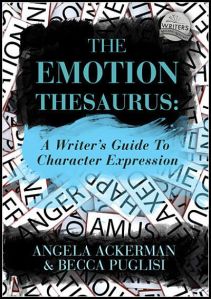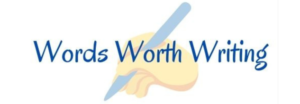 I’ve got myself a little behind on this. I’ve been reading the books, I’ve just not found the time to write them up. In a bid to catch up, here we go again …
I’ve got myself a little behind on this. I’ve been reading the books, I’ve just not found the time to write them up. In a bid to catch up, here we go again …
I set myself the goal of reading and reviewing 52 writing guides over the course of a year. Here is book 30.
The Emotion Thesaurus: a Writer’s Guide to Character Expression is one of a series from Angela Ackerman and Becca Puglisi. All of the books can be investigated on the books page of their Writers Helping Writers website, where there are also pdfs available to buy.
I presume that all of the books are pretty much the same format, but I can only comment on the one I bought.
It’s not a full thesaurus by a long shot. Instead it lists just 75 initial emotions in the index, which in the ebook are all clickable links to the relevant entry.
The book starts with an introduction covering why novels need emotion, the difference between verbal and non verbal communication, and how to balance the two. There is then a section on how to avoid common problems such as telling instead of showing, writing clichés, too much melodrama, and so on. I found this section to be quite interesting as I have problems with some of these myself.
Before the thesaurus proper begins, there’s a final note on how to use the book. The authors first suggest identifying the initial or root emotion and then using both actions and dialogue along with setting to progress. They offer suggestions on how to make your writing stronger, such as turning clichés on their head or using related emotions, but most importantly to think like a reader.
The 75 entries should be used as a starting point. The thesaurus begins with the emotion, such as amazement or confusion or worry. It then offers a definition, followed by physical descriptions the writer could use, internal sensations experienced by the character(s), mental responses, additional feelings this emotion may actually escalate to, and ways to use the emotion as cues to how the character is feeling, how s/he may drag things out and suggestions on how the character may suppress the emotion or feeling.
It’s not a book for reading from start to finish, unless that really is the kind of thing you like to do. It’s more a book for dipping into. Read the introduction and the tips and suggestions the authors offer. But then keep the book as you would a regular thesaurus. However, instead of looking for alternative words to use, look at how to express your characters’ emotions in different and more realistic ways.
If you’re struggling with characterisation or emotion in your fiction, this is a good, concise place to start. It’ll certainly be staying on my own bookshelf for a while.
The other books in the series are: The Emotional Wound Thesaurus: a writer’s guide to psychological trauma; The Rural Setting Thesaurus: a writer’s guide to personal and natural places; The Urban Setting Thesaurus: a writer’s guide to city spaces; The Positive Trait Thesaurus: a writer’s guide to character attributes; The Negative Trait Thesaurus: a writer’s guide to character flaws; and Emotion Amplifiers: a companion to the Emotion Thesaurus.
They certainly know how to maximise a topic!
The Emotion Thesaurus: a Writer’s Guide to Character Expression is available on Kindle for £3.61 ($5.00) and in paperback for £9.31 ($14.24).





















I bought this some time ago, as an ebook, and rarely look at it. Actually I completely forget about it!
A friend did suggest that a hard copy is much more usable, having it besides you on the desk. I think she’s right. For something like this, an ebook just doesn’t work for me. The trouble is the paperback is so much more pricier!
Yes, it’s because a friend suggested it to another friend that I had a look at it, but I remember you saying something similar at the time. I’ll remember it’s there. Apparently, my own writing lacks emotion at times!